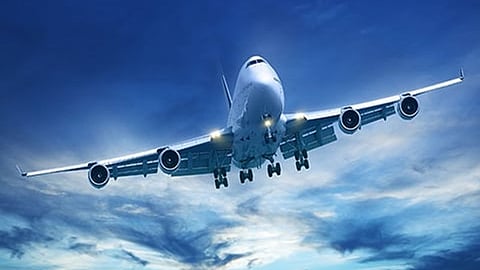Airlines Set to Earn 2.7% Net Profit Margin on Record Revenues in 2024
The International Air Transport Association (IATA) announced strengthened profitability projections for airlines in 2023, which will then largely stabilize in 2024.
The Middle East is expected to deliver a strong financial performance in both 2023 and 2024.
The Middle East carriers have been swift to rebuild their international networks and restore their super-connector hubs. To that end, capacity is expected to grow faster than demand in 2024; however, with more efficient fleets, net profit margin has a potential to slightly increase.
Meanwhile, net profitability at the global level is expected to be well below the cost of capital in both years. Very significant regional variations in financial performance remain.
IATA's OVerall Global Outlook highlights include:
Airline industry net profits are expected to reach US$25.7 billion in 2024 (2.7% net profit margin). That will be a slight improvement over 2023 which is expected to show a US$23.3 billion net profit (2.6% net profit margin).
In both 2023 and 2024 return on invested capital will lag the cost of capital by 4p.p., as interest rates around the world have risen in response to the sharp inflationary impulse.
Airline industry operating profits are expected to reach $49.3 billion in 2024 from $40.7 billion in 2023.
Total revenues in 2024 are expected to grow 7.6% year over year to a record $964 billion.
Expense growth is expected to be slightly lower at 6.9% for a total of $914 billion.
Some 4.7 billion people are expected to travel in 2024, an historic high that exceeds the pre-pandemic level of 4.5 billion recorded in 2019.
Cargo volumes are expected to be 58 and 61 million tonnes in 2023 and 2024, respectively.
Willie Walsh, IATA’s Director General said: “Considering the major losses of recent years, the US$25.7 billion net profit expected in 2024 is a tribute to aviation’s resilience.
First Italian Flight Operated by MSC Air Cargo Takes Off for Tokyo
"People love to travel and that has helped airlines to come roaring back to pre-pandemic levels of connectivity.
"The speed of the recovery has been extraordinary; yet it also appears that the pandemic has cost aviation about four years of growth. From 2024 the outlook indicates that we can expect more normal growth patterns for both passenger and cargo.
“Industry profits must be put into proper perspective. While the recovery is impressive, a net profit margin of 2.7% is far below what investors in almost any other industry would accept. Of course, many airlines are doing better than that average, and many are struggling.
"But there is something to be learned from the fact that, on average airlines will retain just $5.45 for every passenger carried. That’s about enough to buy a basic ‘grande latte’ at a London Starbucks.
"But it is far too little to build a future that is resilient to shocks for a critical global industry on which 3.5% of GDP depends and from which 3.05 million people directly earn their livelihoods.
"Airlines will always compete ferociously for their customers, but they remain far too burdened by onerous regulation, fragmentation, high infrastructure costs and a supply chain populated with oligopolies.”
Cargo revenues
Cargo Revenues are expected to fall to $111 billion in 2024. That is down sharply from an extraordinary peak of $210 billion in 2021, but it is above 2019 revenues which were $101 billion.
Yields will continue to be negatively impacted by the continued growth of belly capacity (related to strong growth on the passenger side of the business) while international trade stagnates.
"Yields are expected to further correct towards pre-pandemic levels with a -32.2% decline in 2023 followed by a -20.9% decline expected in 2024. They will remain high by historical standards, however.
"Note that yield progression has been extraordinary in these last years (-8.2% in 2019, +54.7% in 2020, +25.9% in 2021, +7% in 2022, -32.2% in 2023).
Sustainability
The aviation industry will increase its use of Sustainable Aviation Fuels (SAF) and carbon credits to reduce its carbon footprint.
SAF production could rise to 0.53% of airlines’ total fuel consumption in 2024, adding US$2.4 billion to next year’s fuel bill.
In addition, the Carbon Offsetting and Reduction Scheme for International Aviation (CORSIA) is a global market-based carbon offsetting mechanism designed to stabilize international aviation emissions. The CORSIA-related costs are estimated at $1 billion in 2024.
Non-fuel expenses have been controlled relatively well by airlines despite inflationary pressures. With fixed costs being distributed over a larger scale of activity as the industry recovered from the pandemic, non-fuel unit costs are falling in line with pre-pandemic level.
Read More: Q4 2023 Air Cargo Demand So Far Exceeds Last Year’s Levels


